Abstract
There is a profound need, on both clinical and physiologic grounds, for a measure of the contractile state of the intact ventricle. Such a measure can be obtained by evaluating the force-velocity relationship with a correction for myocardial fiber length. The force-velocity relation can be expressed as the ratio of maximum rate of pressure rise to maximum isovolumetric pressure, a quantity which was described by Hill as the maximum rate of proportional rise of pressure and which is similar to the velocity constant of a chemical reaction. Division of this ratio by an estimate of ventricular circumference corrects for variations due to differences in initial fiber length.
This index was evaluated in 11 normal subjects and 46 patients with cardiac disease during left heart catheterization. Maximum rate of pressure rise was obtained by electronic differentiation of the ventricular pressure pulse, and ventricular circumference, assuming a spherical ventricle, was calculated from volumes measured by indicator washout.
The contractility index of normal subjects did not differ from that of patients with mitral stenosis, atrial septal defect, or chronic pulmonary disease (patients without left ventricular overloading). In contrast, in patients with left ventricular failure, the indices were more than two standard deviations below the mean value for normal subjects. Such a reduction was not noted in patients with pressure or volume overloading of the left ventricle before the onset of myocardial failure. During exercise, the index rose uniformly in patients without left ventricular disease, responded variably in compensated patients with volume or pressure overloading, and was virtually unchanged in patients with left ventricular decompensation. The administration of isoproterenol or digitalis resulted in increased contractility regardless of the patient's status. It is concluded that the use of this index in physiologic studies of the ventricle and in diagnostic and therapeutic decisions is justified.
Full text
PDF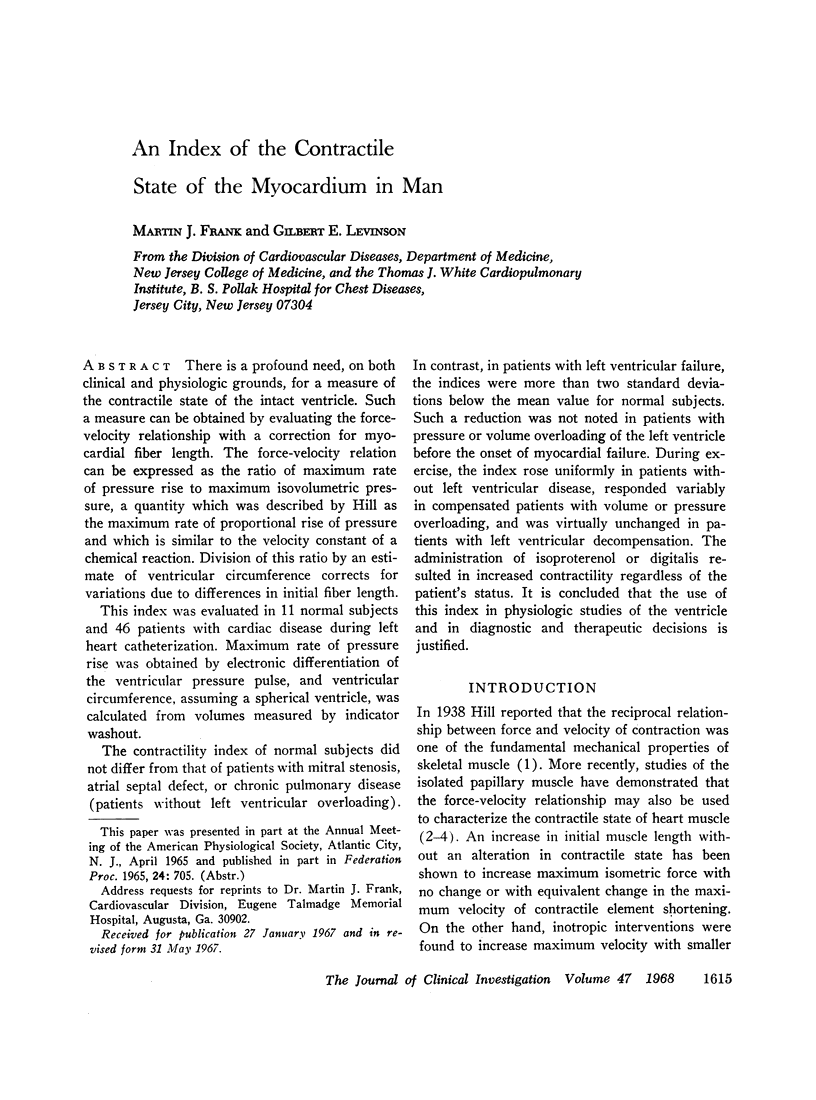

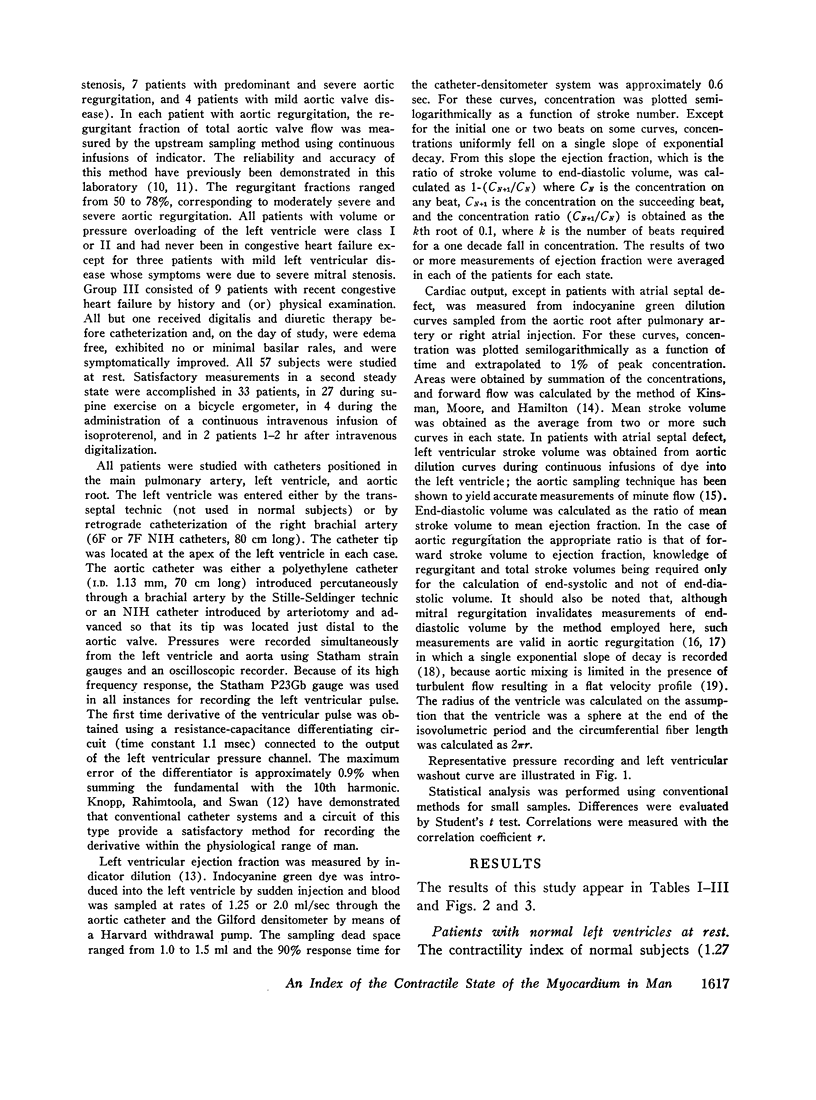
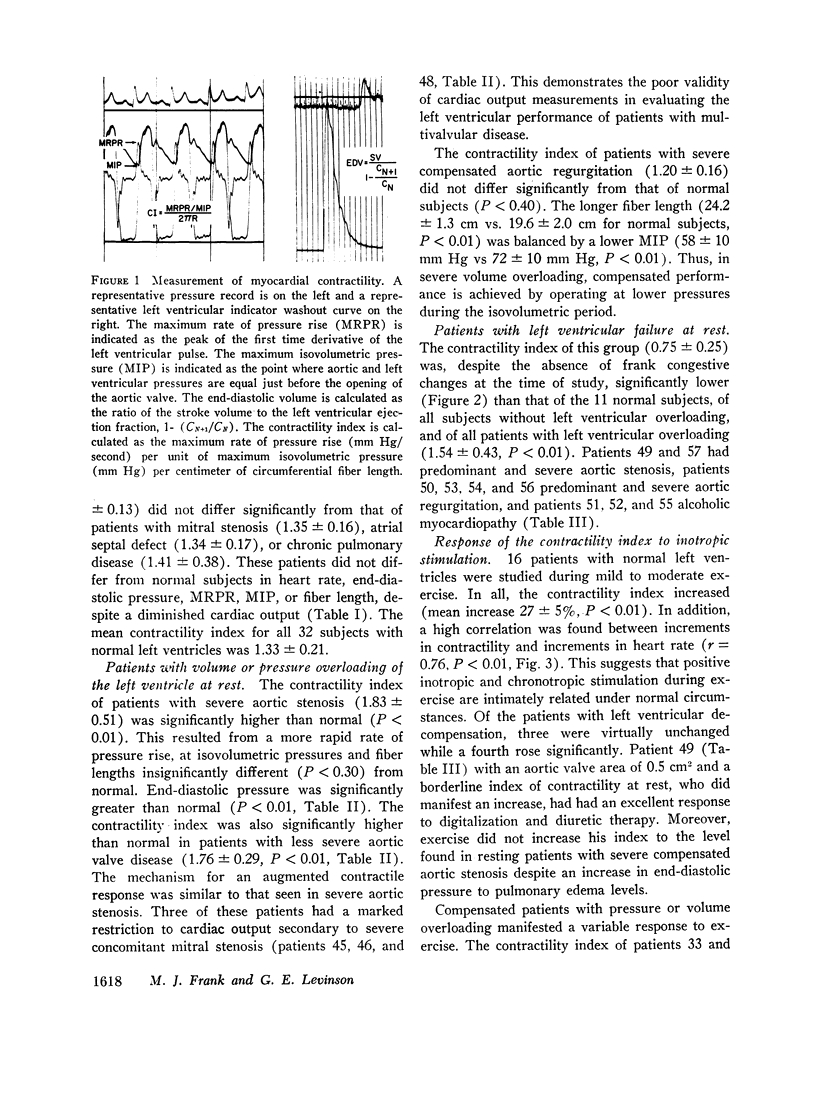
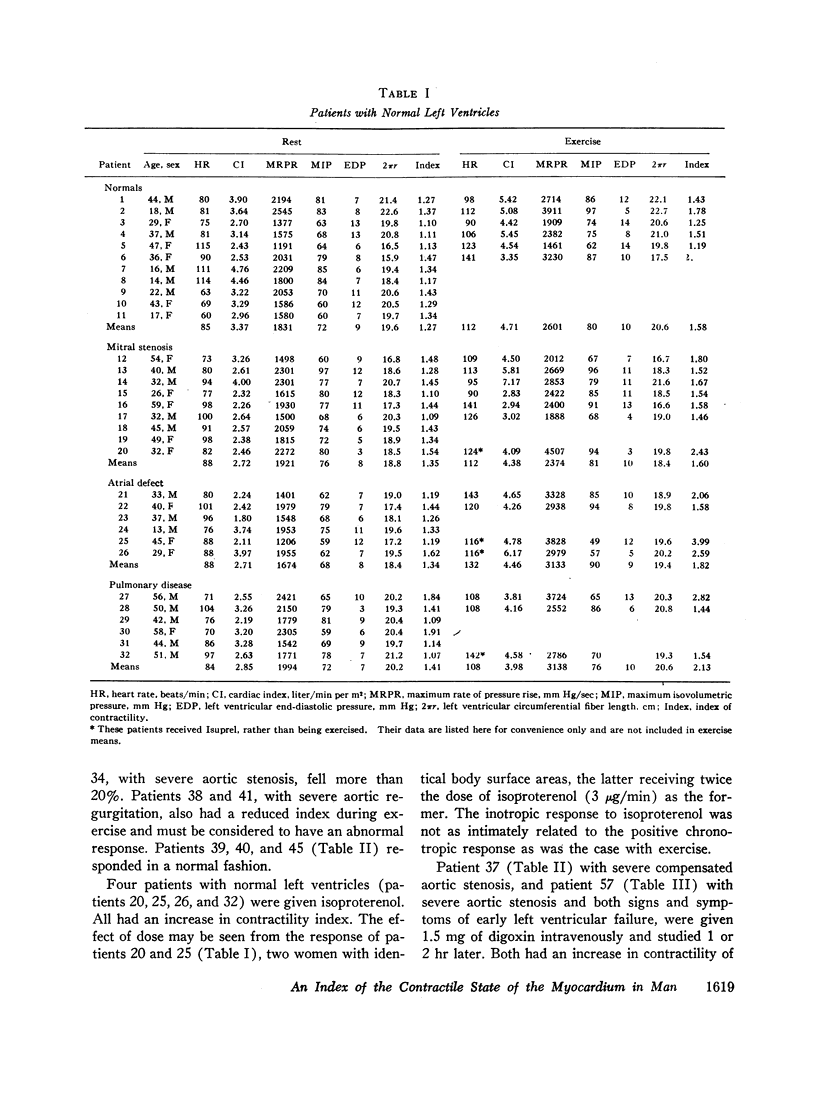
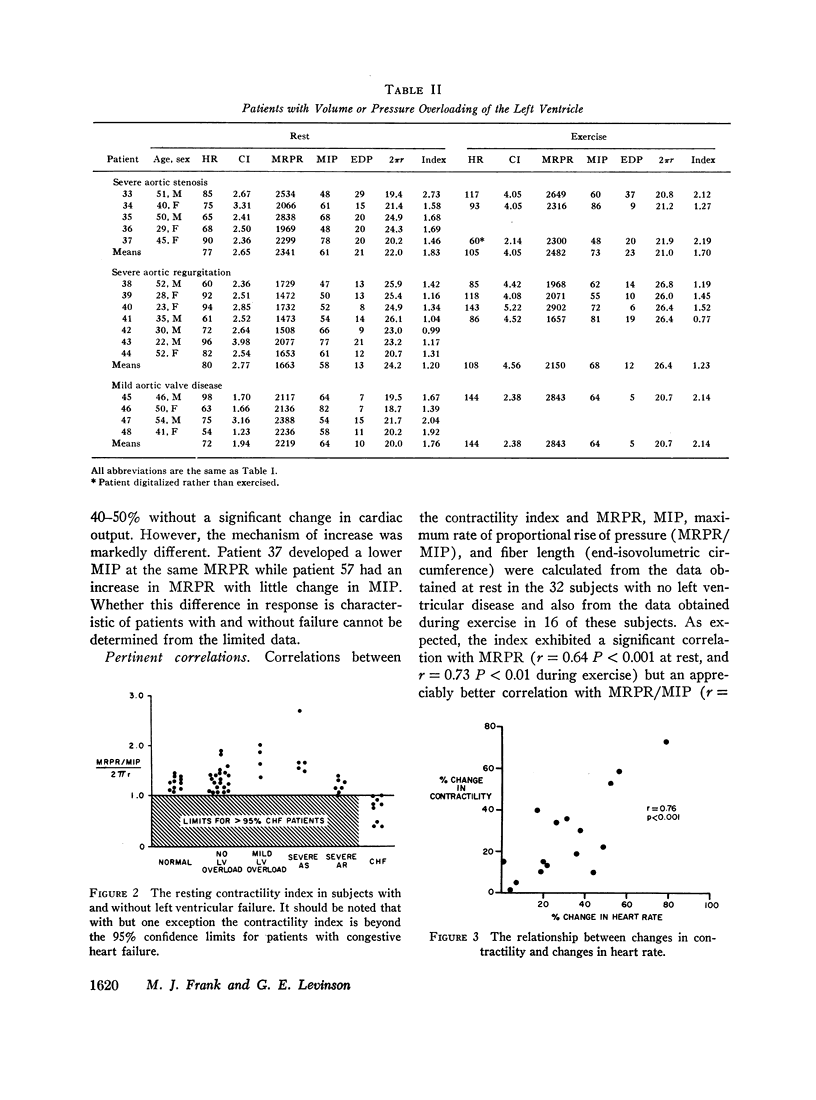

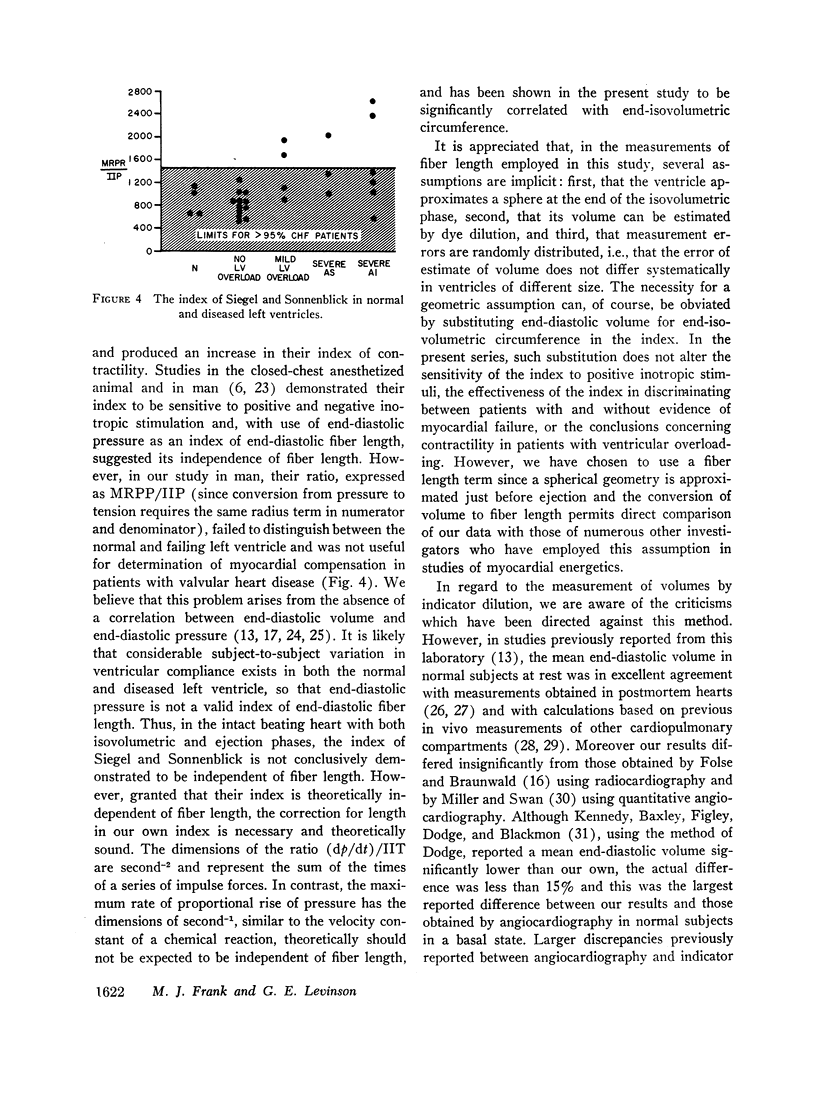
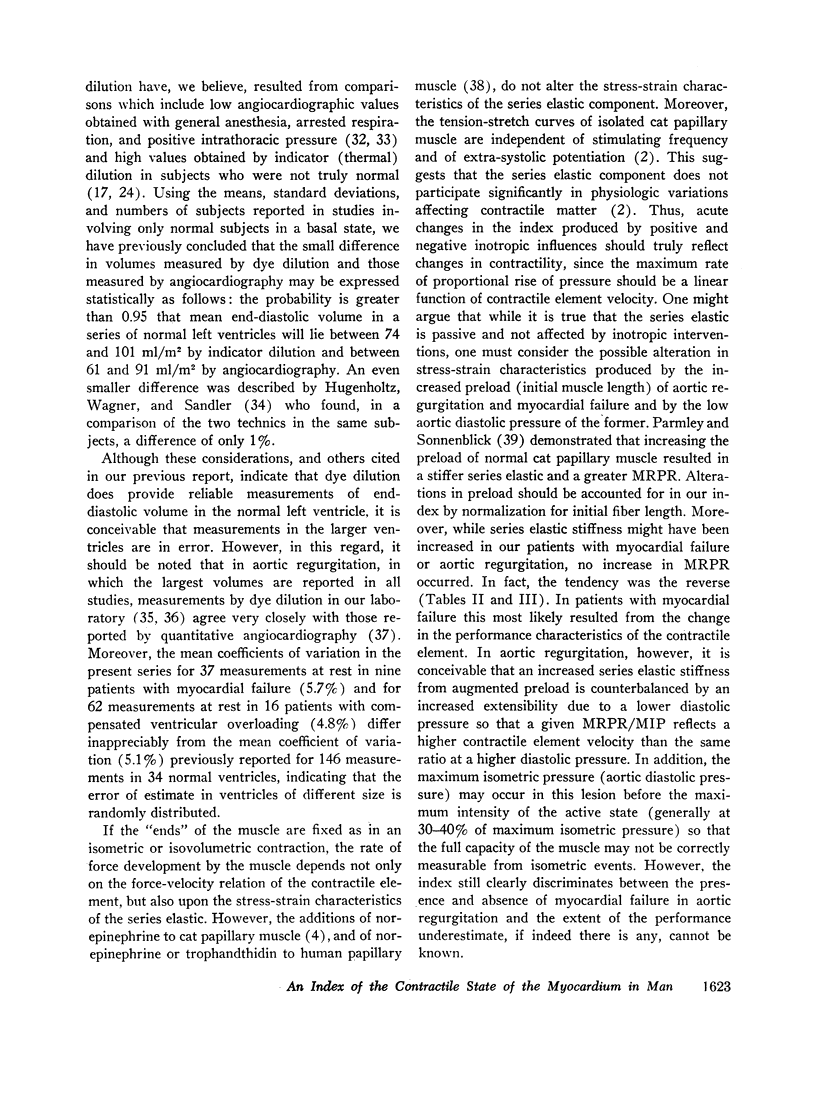
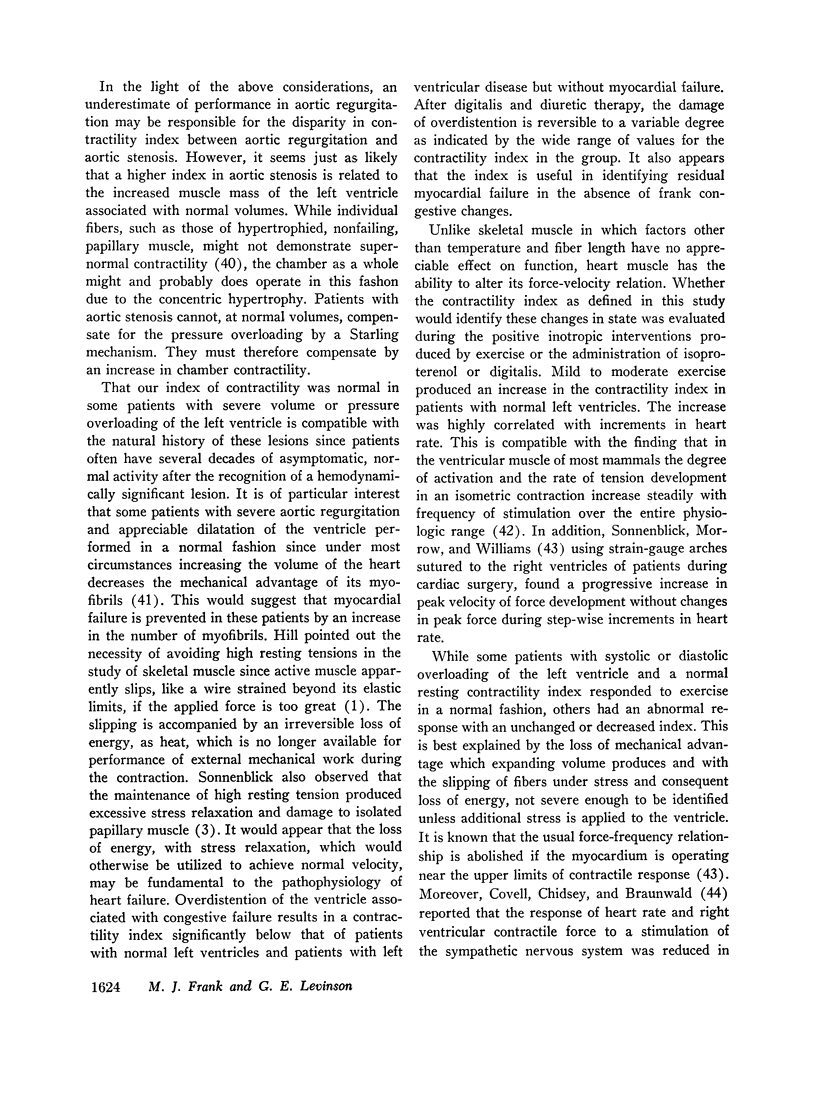
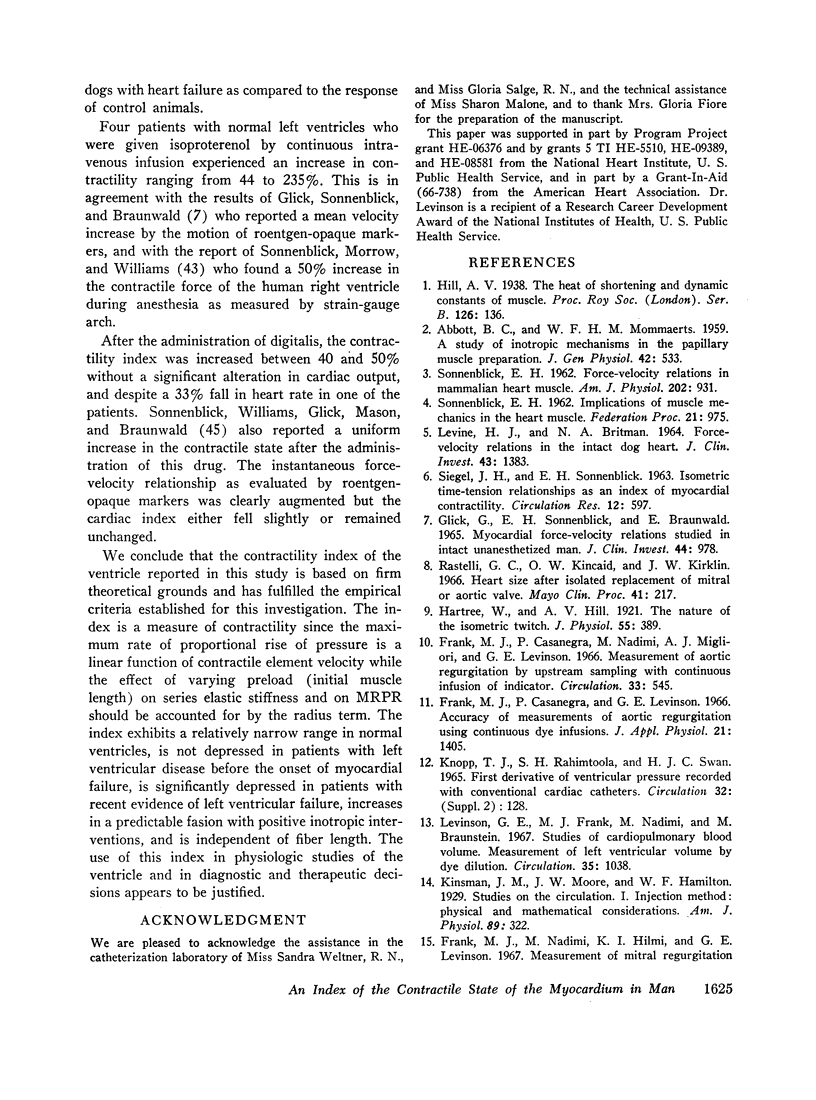
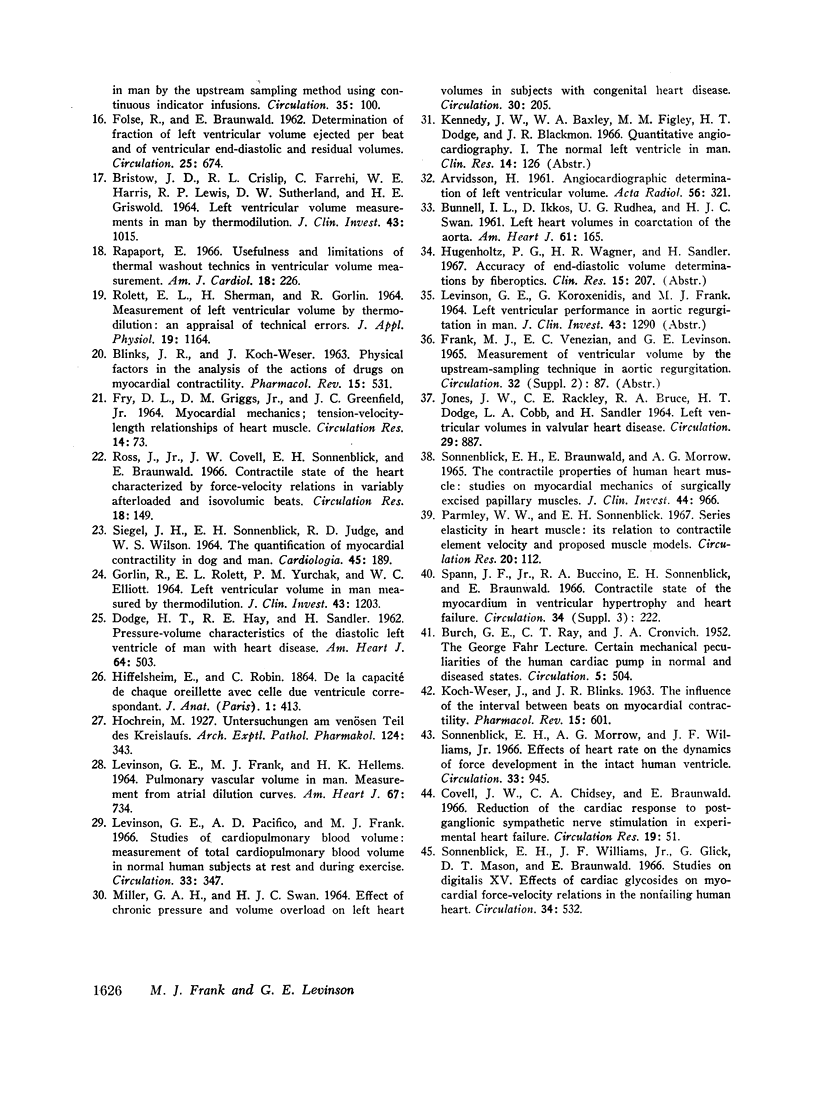
Selected References
These references are in PubMed. This may not be the complete list of references from this article.
- ABBOTT B. C., MOMMAERTS W. F. A study of inotropic mechanisms in the papillary muscle preparation. J Gen Physiol. 1959 Jan 20;42(3):533–551. doi: 10.1085/jgp.42.3.533. [DOI] [PMC free article] [PubMed] [Google Scholar]
- ARVIDSSON H. Angiocardiographic determination of left ventricular volume. Acta radiol. 1961 Nov;56:321–339. doi: 10.3109/00016926109172827. [DOI] [PubMed] [Google Scholar]
- BLINKS J. R., KOCH-WESER J. PHYSICAL FACTORS IN THE ANALYSIS OF THE ACTIONS OF DRUGS ON MYOCARDIAL CONTRACTILITY. Pharmacol Rev. 1963 Sep;15:531–599. [PubMed] [Google Scholar]
- BRISTOW J. D., CRISLIP R. L., FARREHI C., HARRIS W. E., LEWIS R. P., SUTHERLAND D. W., GRISWOLD H. E. LEFT VENTRICULAR VOLUME MEASUREMENTS IN MAN BY THERMODILUTION. J Clin Invest. 1964 Jun;43:1015–1024. doi: 10.1172/JCI104985. [DOI] [PMC free article] [PubMed] [Google Scholar]
- BUNNELL I. L., IKKOS D., RUDHE U. G., SWAN H. J. Left-heart volumes in coarctation of the aorta. Am Heart J. 1961 Feb;61:165–172. doi: 10.1016/0002-8703(61)90571-3. [DOI] [PubMed] [Google Scholar]
- BURCH G. E., RAY C. T., CRONVICH J. A. Certain mechanical peculiarities of the human cardiac pump in normal and diseased states. Circulation. 1952 Apr;5(4):504–513. doi: 10.1161/01.cir.5.4.504. [DOI] [PubMed] [Google Scholar]
- DODGE H. T., HAY R. E., SANDLER H. Pressure-volume of the diastolic left ventricle of man with heart disease. Am Heart J. 1962 Oct;64:503–511. doi: 10.1016/0002-8703(62)90036-4. [DOI] [PubMed] [Google Scholar]
- FOLSE R., BRAUNWALD E. Determination of fraction of left ventricular volume ejected per beat and of ventricular end-diastolic and residual volumes. Experimental and clinical observations with a precordial dilution technic. Circulation. 1962 Apr;25:674–685. doi: 10.1161/01.cir.25.4.674. [DOI] [PubMed] [Google Scholar]
- FRY D. L., GRIGGS D. M., Jr, GREENFIELD J. C., Jr MYOCARDIAL MECHANICS: TENSION-VELOCITY-LENGTH RELATIONSHIPS OF HEART MUSCLE. Circ Res. 1964 Jan;14:73–85. doi: 10.1161/01.res.14.1.73. [DOI] [PubMed] [Google Scholar]
- Frank M. J., Casanegra P., Levinson G. E. Accuracy of measurements of aortic regurgitation using continuous dye infusions. J Appl Physiol. 1966 Jul;21(4):1405–1408. doi: 10.1152/jappl.1966.21.4.1405. [DOI] [PubMed] [Google Scholar]
- Frank M. J., Casanegra P., Nadimi M., Migliori A. J., Levinson G. E. Measurement of aortic regurgitation by upstream sampling with continuous infusion of indicator. Circulation. 1966 Apr;33(4):545–557. doi: 10.1161/01.cir.33.4.545. [DOI] [PubMed] [Google Scholar]
- Frank M. J., Nadimi M., Hilmi K. I., Levinson G. E. Measurement of mitral regurgitation in man by the upstream sampling method using continuous indicator infusions. Circulation. 1967 Jan;35(1):100–111. doi: 10.1161/01.cir.35.1.100. [DOI] [PubMed] [Google Scholar]
- GLICK G., SONNENBLICK E. H., BRAUNWALD E. MYOCARDIAL FORCE-VELOCITY RELATIONS STUDIED IN INTACT UNANESTHETIZED MAN. J Clin Invest. 1965 Jun;44:978–988. doi: 10.1172/JCI105215. [DOI] [PMC free article] [PubMed] [Google Scholar]
- GORLIN R., ROLETT E. L., YURCHAK P. M., ELLIOTT W. C. LEFT VENTRICULAR VOLUME IN MAN MEASURED BY THERMODILUTION. J Clin Invest. 1964 Jun;43:1203–1221. doi: 10.1172/JCI105004. [DOI] [PMC free article] [PubMed] [Google Scholar]
- Hartree W., Hill A. V. The nature of the isometric twitch. J Physiol. 1921 Nov 18;55(5-6):389–411. doi: 10.1113/jphysiol.1921.sp001984. [DOI] [PMC free article] [PubMed] [Google Scholar]
- JONES J. W., RACKLEY C. E., BRUCE R. A., DODGE H. T., COBB L. A., SANDLER H. LEFT VENTRICULAR VOLUMES IN VALVULAR HEART DISEASE. Circulation. 1964 Jun;29:887–891. doi: 10.1161/01.cir.29.6.887. [DOI] [PubMed] [Google Scholar]
- KOCH-WESER J., BLINKS J. R. THE INFLUENCE OF THE INTERVAL BETWEEN BEATS ON MYOCARDIAL CONTRACTILITY. Pharmacol Rev. 1963 Sep;15:601–652. [PubMed] [Google Scholar]
- LEVINE H. J., BRITMAN N. A. FORCE-VELOCITY RELATIONS IN THE INTACT DOG HEART. J Clin Invest. 1964 Jul;43:1383–1396. doi: 10.1172/JCI105014. [DOI] [PMC free article] [PubMed] [Google Scholar]
- LEVINSON G. E., FRANK M. J., HELLEMS H. K. THE PULMONARY VASCULAR VOLUME IN MAN. MEASUREMENT FROM ATRIAL DILUTION CURVES. Am Heart J. 1964 Jun;67:734–741. doi: 10.1016/0002-8703(64)90174-7. [DOI] [PubMed] [Google Scholar]
- Levinson G. E., Frank M. J., Nadimi M., Braunstein M. Studies of cardiopulmonary blood volume. Measurement of left ventricular volume by dye dilution. Circulation. 1967 Jun;35(6):1038–1048. doi: 10.1161/01.cir.35.6.1038. [DOI] [PubMed] [Google Scholar]
- Levinson G. E., Pacifico A. D., Frank F. M. Studies of cardiopulmonary blood volume. Measurement of total cardiopulmonary blood volume in normal human subjects at rest and during exercise. Circulation. 1966 Mar;33(3):347–356. doi: 10.1161/01.cir.33.3.347. [DOI] [PubMed] [Google Scholar]
- MILLER G. A., SWAN H. J. EFFECT OF CHRONIC PRESSURE AND VOLUME OVERLOAD ON LEFT HEART VOLUMES IN SUBJECTS WITH CONGENITAL HEART DISEASE. Circulation. 1964 Aug;30:205–216. doi: 10.1161/01.cir.30.2.205. [DOI] [PubMed] [Google Scholar]
- Parmley W. W., Sonnenblick E. H. Series elasticity in heart muscle. Its relation to contractile element velocity and proposed muscle models. Circ Res. 1967 Jan;20(1):112–123. doi: 10.1161/01.res.20.1.112. [DOI] [PubMed] [Google Scholar]
- ROLETT E. L., SHERMAN H., GORLIN R. MEASUREMENT OF LEFT VENTRICULAR VOLUME BY THERMODILUTION: AN APPRAISAL OF TECHNICAL ERRORS. J Appl Physiol. 1964 Nov;19:1164–1174. doi: 10.1152/jappl.1964.19.6.1164. [DOI] [PubMed] [Google Scholar]
- Rastelli G. C., Kincaid O. W., Kirklin J. W. Heart size after isolated replacement of mitral or aortic valve. Mayo Clin Proc. 1966 Apr;41(4):217–223. [PubMed] [Google Scholar]
- SIEGEL J. H., SONNENBLICK E. H. Isometric time-tension relationships as an index of myocardial contractility. Circ Res. 1963 Jun;12:597–610. doi: 10.1161/01.res.12.6.597. [DOI] [PubMed] [Google Scholar]
- SIEGEL J. H., SONNENBLICK E. H., JUDGE R. D., WILSON W. S. THE QUANTIFICATION OF MYOCARDIAL CONTRACTILITY IN DOG AND MAN. Cardiologia. 1964;45:189–221. doi: 10.1159/000168110. [DOI] [PubMed] [Google Scholar]
- SONNENBLICK E. H., BRAUNWALD E., MORROW A. G. THE CONTRACTILE PROPERTIES OF HUMAN HEART MUSCLE: STUDIES ON MYOCARDIAL MECHANICS OF SURGICALLY EXCISED PAPILLARY MUSCLES. J Clin Invest. 1965 Jun;44:966–977. doi: 10.1172/JCI105214. [DOI] [PMC free article] [PubMed] [Google Scholar]
- SONNENBLICK E. H. Force-velocity relations in mammalian heart muscle. Am J Physiol. 1962 May;202:931–939. doi: 10.1152/ajplegacy.1962.202.5.931. [DOI] [PubMed] [Google Scholar]
- SONNENBLICK E. H. Implications of muscle mechanics in the heart. Fed Proc. 1962 Nov-Dec;21:975–990. [PubMed] [Google Scholar]
- Sonnenblick E. H., Morrow A. G., Williams J. F., Jr Effects of heart rate on the dynamics of force development in the intact human ventricle. Circulation. 1966 Jun;33(6):945–951. doi: 10.1161/01.cir.33.6.945. [DOI] [PubMed] [Google Scholar]
- Sonnenblick E. H., Williams J. F., Jr, Glick G., Mason D. T., Braunwald E. Studies on digitalis. XV. Effects of cardiac glycosides on myocardial force-velocity relations in the nonfailing human heart. Circulation. 1966 Sep;34(3):532–539. doi: 10.1161/01.cir.34.3.532. [DOI] [PubMed] [Google Scholar]


